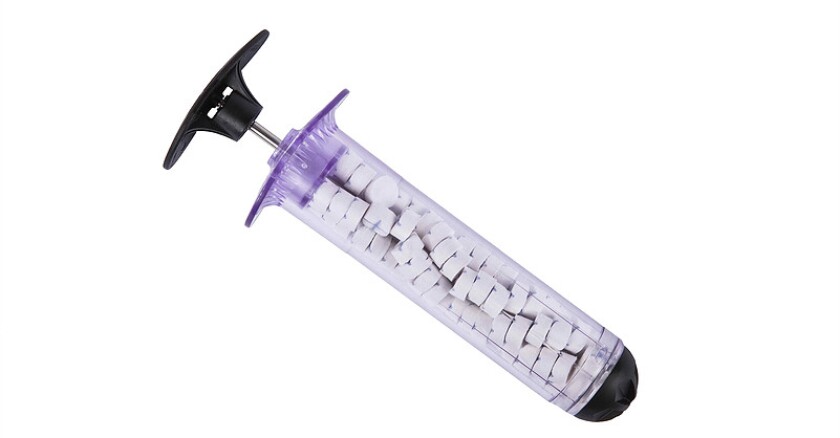That can change if first responders have XSTAT, a new treatment that stops bleeding within a minute of opening its package. It’s a syringe with tiny sponges that are pumped into the wound and expand, creating pressure that stops the bleeding.
It was designed for the military, which found that 20 percent of combat deaths could have been prevented with such a solution.
The main use for XSTAT is for penetrating wounds, such as gunshot wounds, knife wounds, injuries from projectiles, that are on a part of the body where it’s difficult to apply a tourniquet. The standard remedy, to this point, for such wounds is packing the wound and absent XSTAT, that means stuffing it with hemostatic dressing or gauze.
“Picture the size of a 9-mm gunshot wound,” said Will Fox, vice president of sales and marketing for RevMedx, which makes XSTAT. “Imagine sticking your finger in that hole about 30 times with gauze.”

Dr. Kenji Inaba is a trauma surgeon at Los Angeles County General Hospital and also a sworn reserve police officer in the Rampart Division of the Los Angeles Police Department, and he’s used XSTAT 14 times, each time saving the patient.
Using XSTAT is always a prelude to surgery where vessels have to be repaired and when using this technology, the sponges have to be removed. The sponges are each equipped with markers that can be seen with an X-ray.
Fox said that about 15 entities, including the Highland Park, Texas, Department of Public Safety, have either adopted XSTAT or are testing it.
“Over the last nine months, we’ve been focusing on prehospital — EMS services, fire, trauma hospitals, places where you see a need for this such as for gunshot victims,” Fox said. “Some just want to be prepared for a natural disaster or mass casualty or active shooter incident.”
XSTAT can also be used in place of a tourniquet on some injuries. “We just received expanded clearance from the FDA to include extremity injuries,” Fox said. “Sometimes you have severe injuries to arms or legs where a tourniquet isn’t affective, or severe arterial bleeding, and that’s what XSTAT is designed to treat.”
The cost of an XSTAT is about $80, more expensive than gauze or a tourniquet, which costs around $27. Fox said RevMedx is working on getting the price down but pointed out that while one unit of XSTAT is more expensive than a tourniquet or gauze, the results are worth it.
“To pack a wound with gauze, you would need two or three rolls, which would be the same cost,” he said. “And tourniquets aren’t reusable either; you have somebody bleeding all over the place, you’re not going to reuse a tourniquet.”








